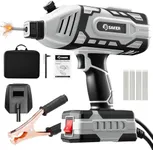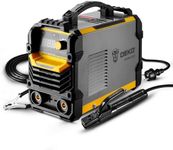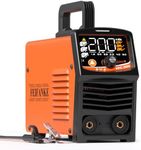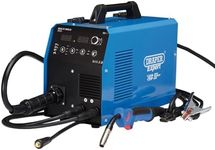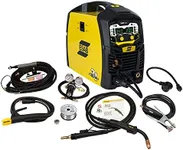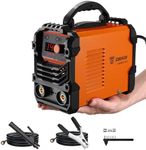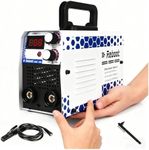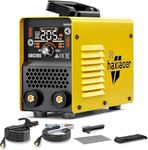Buying Guide for the Best Arc Welders
Choosing the right arc welder involves understanding your specific needs and the types of projects you plan to undertake. Arc welders are versatile tools used for joining metals, and selecting the right one can make a significant difference in the quality and efficiency of your work. Consider the materials you will be welding, the thickness of these materials, and the environment in which you will be working. Additionally, think about your level of experience and how often you plan to use the welder. By evaluating these factors, you can narrow down your options and find an arc welder that best suits your requirements.Amperage RangeAmperage range refers to the range of electrical current the welder can produce. This is important because different materials and thicknesses require different amperage levels for effective welding. Lower amperage is suitable for thinner materials, while higher amperage is needed for thicker materials. If you plan to work on a variety of projects, a welder with a wide amperage range will offer more versatility. Consider the types of materials and thicknesses you will be welding most often to determine the appropriate amperage range for your needs.
Duty CycleThe duty cycle is the amount of time a welder can operate continuously before needing to cool down. It is usually expressed as a percentage of a 10-minute period. A higher duty cycle means the welder can run longer without overheating, which is crucial for larger or more demanding projects. If you plan to use the welder for extended periods or on heavy-duty tasks, look for a model with a higher duty cycle. For occasional or light use, a lower duty cycle may be sufficient.
Input PowerInput power refers to the electrical power supply required to operate the welder. Welders can be powered by either 110/120V or 220/240V outlets. The choice between these depends on the power availability in your workspace and the thickness of the materials you plan to weld. 110/120V welders are suitable for lighter tasks and are more portable, while 220/240V welders are better for heavier tasks and thicker materials. Consider the power supply you have access to and the nature of your projects when choosing the input power.
PortabilityPortability is the ease with which you can move the welder around. This is important if you need to transport the welder to different job sites or move it frequently within your workspace. Portable welders are typically lighter and more compact, making them ideal for on-the-go projects. If your work requires mobility, look for a welder that is easy to carry and has a manageable weight. For stationary work, portability may be less of a concern.
Type of Arc WelderThere are several types of arc welders, including stick welders, MIG welders, and TIG welders, each suited for different applications. Stick welders are versatile and can be used outdoors or on rusty or dirty materials. MIG welders are easier to use and are great for beginners, offering clean and efficient welds. TIG welders provide precise control and are ideal for detailed work on thin materials. Consider the type of projects you will be working on and your level of expertise when choosing the type of arc welder.

